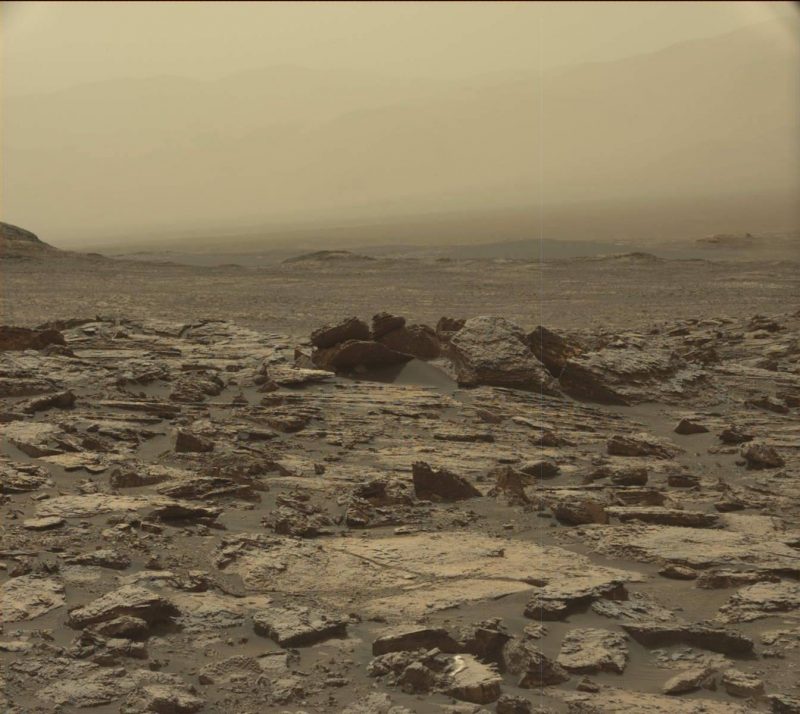What’s cool about Curiosity’s discovery of organic molecules on Mars
Paul Scott Anderson in SPACE | March 19, 2020
The Curiosity rover has found organic molecules called thiophenes, which, on Earth, are associated with biological systems. Are they evidence for once-living microbes on Mars?

This is Mars, the planet next door, as seen through the robot eyes of the Curiosity rover. This is where the Curiosity rover found ancient organic molecules in Martian mudstones. Image via NASA/ JPL-Caltech. |
The search for evidence of life on Mars, past or present, just took an interesting new twist. Researchers studying the data sent back by NASA’s Curiosity rover have found evidence for organic molecules called thiophenes, which, on Earth at least, are primarily a result of biological processes. The researchers are not claiming proof of life, but the discovery is certainly intriguing. The finding is being called “consistent with the presence of early life on Mars.”
The findings were announced by researchers from Washington State University, and the peer-reviewed paper was published in the journal Astrobiology on February 24, 2020.
On Earth, thiophenes are often found in coal, crude oil, kerogen and even a species of mushrooms called white truffles. They can also be found in stromatolites and microfossils. On Mars, they were found by Curiosity, along with other organics, in an ancient mudstone formation called the Murray Formation.
The new paper explores some of the ways that thiophenes could be created on Mars, either biologically or abiotically (without life). As astrobiologist Dirk Schulze-Makuch, one of the two authors, explained in a statement:
We identified several biological pathways for thiophenes that seem more likely than chemical ones, but we still need proof. If you find thiophenes on Earth, then you would think they are biological, but on Mars, of course, the bar to prove that has to be quite a bit higher.














 Reply With Quote
Reply With Quote